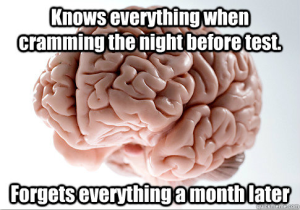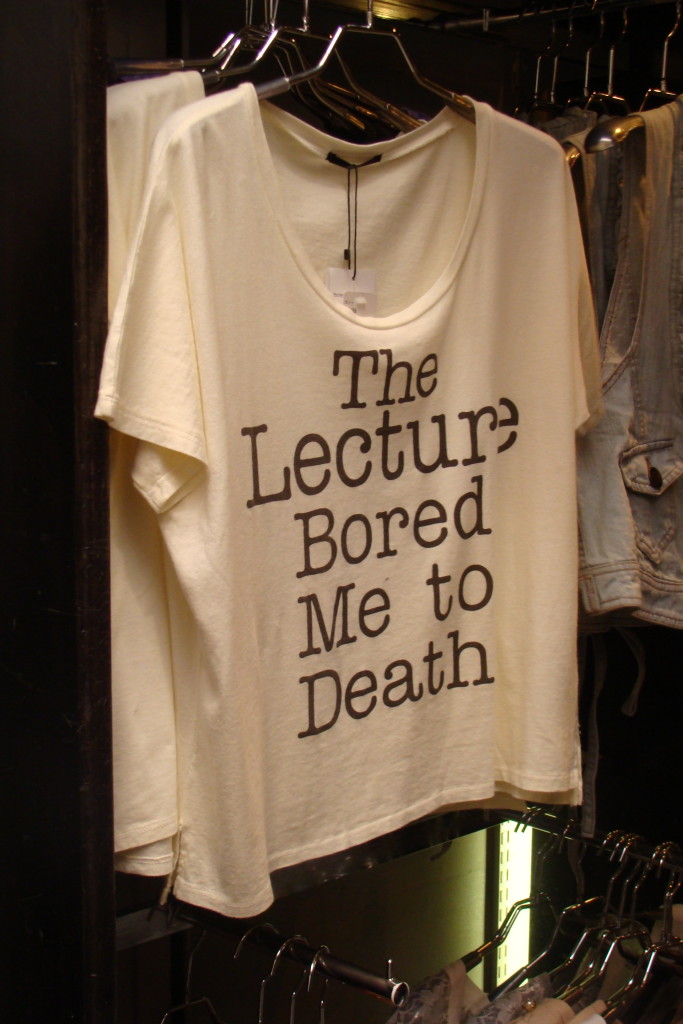In an age where learners can download all of the content they want for free, there is limited value in continuing to feed them a pre-digested, pre-prepared curriculum. The institutions that will thrive in our age of digital hyper-connectivity will do so because of the quality and depth of the learning experiences they offer, the relationships that they foster, the networks that they broker, and their bespoke content generation (research).
A few days ago I published part 1 of a post about the above quote. In the post I discussed higher education’s addiction to content. I talked about how teacher preparation and pre-digestion of course content is not only highly inefficient, it also runs counter to what we know about good pedagogic practice and the development of graduate capabilities such as information literacy and lifelong learning. I also implied that in the near future, as global market competition between universities heats up, continuing to focus on packaging content will not be a productive strategy (particularly if much of that content is available online at zero cost to the student anyway).
Imagine asking a student to describe the most exciting and interesting feature of their course. They are never going to say ‘the content’, and they’re never going to say, ‘the prescribed readings’. They are certainly never going to say, ‘the lecturer’s powerpoint slides’!
I’m not saying that we should do away with content, readings or powerpoint entirely. What I am saying is that in designing university courses for the future, we need to think carefully about what is going to attract and engage students, and what is going to yield the most valuable (and marketable, let’s be pragmatic here) learning.
Recently, I conducted a market research survey with more than 700 intending and existing students in my faculty. Inthe final section of the survey, I asked them to describe “the most amazing course ever”. The students could write whatever they wanted – and they did, with many giving me extended descriptions, learning approaches, and even fully thought out course titles.
I boiled down the 25,000 words I received from the students. The key elements of an amazing course turned out to be about:
(1) pedagogic approaches (‘hands on, minds on’ and a course that is personally meaningful / tailored to individual interests and needs),
(2) relationships (being part of a supportive, exciting community of learners, teachers and industry representatives), and
(3) being able to make tangible and positive contributions to the world.
This is the stuff I’m getting at when I say ‘the quality and depth of learning experiences’ and ‘the relationships that they foster’ in the quote at the beginning of this post. Incidentally, these are also some of the key features of optimal informal learning for professional development (Bridgstock, 2014). People tend to learn naturally by experiencing something that piques interest or poses a challenge. Often this experience is ‘hands on’ — the person is trying to do something, and through this process they discover that they need more information, or a strategy, or a specific skill. They then undertake research (broadly defined) to meet this need — they read, check online discussion groups, Google the topic, or wander into the next cubicle to ask their colleague. Thus, there is immediate, just-in-time relevance to the further learning that they are undertaking. Other ways that interest can be piqued is through informal discussion, reading magazines, surfing the web, or encountering new places. You get the idea.
A big point to make here is that no one is asking these people to memorise facts on faith that they might need them at some point in the future, or to acquire decontextualised skills that aren’t applied immediately. Human beings are actually really, really bad at learning using these approaches. However, this is exactly what we in universities ask students to do most of the time.
Right, so here are some questions for thought and discussion. I’m keen to know what you think.
– how do you approach learning when you are able to do it naturally?
– how do your approaches to informal / natural learning differ from your approaches to learning in formal contexts / courses that you have attended? How are they similar?
– what would happen if we designed courses where students were able to learn more naturally?
Re the last question, I wonder: is anyone (a) feeling a bit anxious that we wouldn’t cover the required content if we did this, or (b) worrying about how Timetabling might cope?? 😀 Ah the realities of teaching…
In my next post (part 3) in a few days I’m going to talk more about the ‘community’ and ‘network’ aspects of learning in the future university, picking up on the students’ responses about relationships being the second element of the most amazing course ever.
